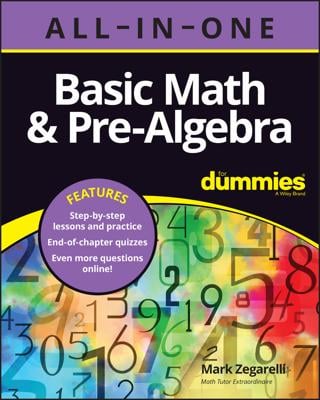Basic Math & Pre-Algebra All-in-One For Dummies (+ Chapter Quizzes Online)
Explore Book Buy On AmazonIf you’ve ever tried to carry a heavy bag of groceries, you may have found that distributing the contents into two smaller bags is helpful. This is similar to how the distributive property works for multiplication.
Here’s an example: multiply 17 101 using the distributive property.
-
1. Simplify the numbers.
In this example, 101 = 100 + 1, so:
17 101 = 17 (100 + 1)
-
Split the problem into two easier problems.
Take the number outside the parentheses, and multiply it by each number inside the parentheses, one at a time.
= (17 100) + (17 1)
-
3. Add the products.
At this point, you may be able to solve the two multiplications in your head and then add them up easily:
= 1,700 + 17
= 1,717

